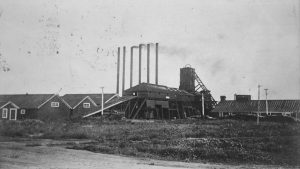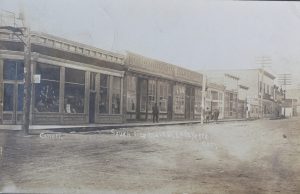Lost Lafayette
08 Apr 2021
Local author Doug Conarroe goes where the crumb trail leads while writing his latest book, "Lost Lafayette."
By Lisa Truesdale
On the evening of July 4, 1923, families in Lafayette looked up from their traditional Independence Day celebrations to see a large cross burning high atop a ridge in the distance. It was an ominous warning to townspeople that the Ku Klux Klan had officially infiltrated the community. Although national KKK members spewed their hate at Black people and Jews, Lafayette’s KKK targeted Latinos and Catholics, since there were no Black or Jewish residents at the time.
Although Lafayette’s current charm makes it hard to imagine such a dark chapter in the town’s history, this is just one of many illustrative tales found in Doug Conarroe’s new history book, “Lost Lafayette.” The book, published in February by The History Press, portrays Lafayette’s hardscrabble roots, including first contact with Native Americans living in the area, the early covered wagon trails dotted with rustic stage stops and saloons, the homesteaders supplying food for gold miners to the west, and the days when coal mining was king.



Researching the chapter on Lafayette’s KKK history was especially painful for Conarroe. “KKK members came from many prominent local families, and their white supremacy was couched in family values,” he explains. “They referred to it as ‘wholesomeness.’ Reading back issues of the hate-filled KKK newspaper turned my stomach, because a lot of it sounded like what we’re hearing about today’s white supremacy and white nationalist movements.”
But, because the KKK pervaded the mayor’s office, the fire department and even the PTA until 1935, Conarroe felt it was important to include information about the KKK’s 12-year reign of intimidation and violence when updating his book. It’s a revised, text-heavier edition of his previous book, “80026: An illustrated history of Lafayette, Colo., 1829–1929.”
He explains that the word “lost” in the new book’s title alludes to “what’s gone from our history—what was here before and where it went.” That includes not just the KKK years, but also fresh details about coal mining, the railroads and the influence of early agriculture. Discussing the latter, he says, “Now, it’s mostly just government-owned property leased back to farmers.”
As more and more digital resources are coming online, Conarroe says, it’s possible to search and find things that you couldn’t before. This time around, those resources helped him stay true to one of his favorite sayings: “Go where the crumb trail leads.”

A fourth-generation Coloradan, Conarroe grew up immersed in history, with the need to always tell interesting stories. “Write what you know,” he was told, so he did, following in his parents’ footsteps. His father, Percy, was the owner and publisher of the Lafayette News, Louisville Times and Erie Review from 1965 to 1997; Percy also wrote several history books, including “Calhan: Life in a Small Town on the Plains of Eastern Colorado.” Conarroe’s mom, Carolyn, wrote three history books, including “The Louisville Story.” His brother, Dave, is a history writer, too, with books about Northern Ireland and Belfast.
It takes many research hours to write history books, says Conarroe, explaining how he spent a full day at History Colorado searching through KKK membership rolls on microfiche. But he doesn’t mind the time it takes.
“It’s not about setting out to write a bestseller,” he says. “For me, and for my family, writing about local history has always been a labor of love.”












